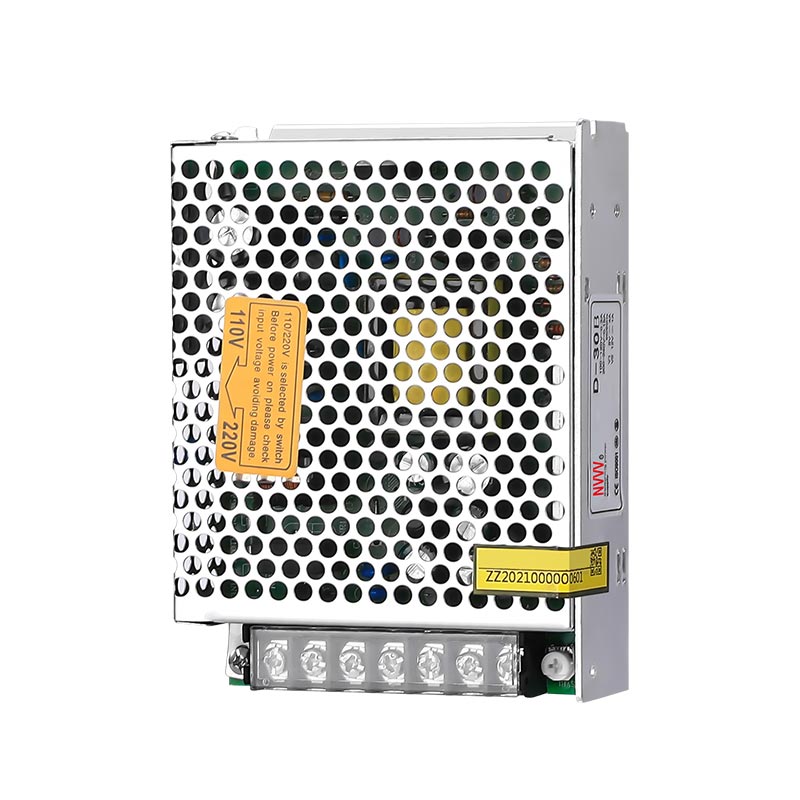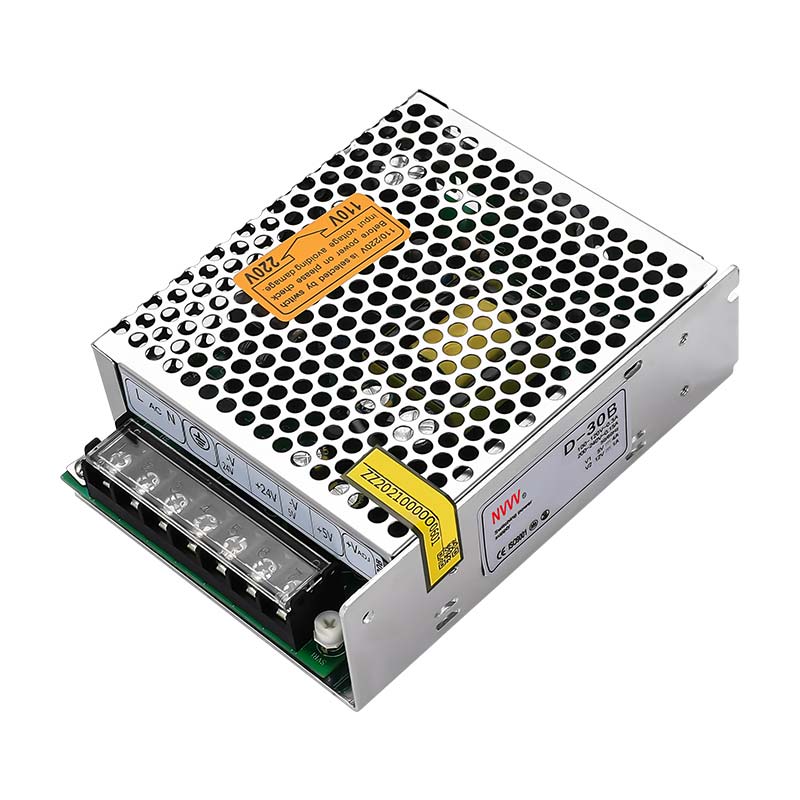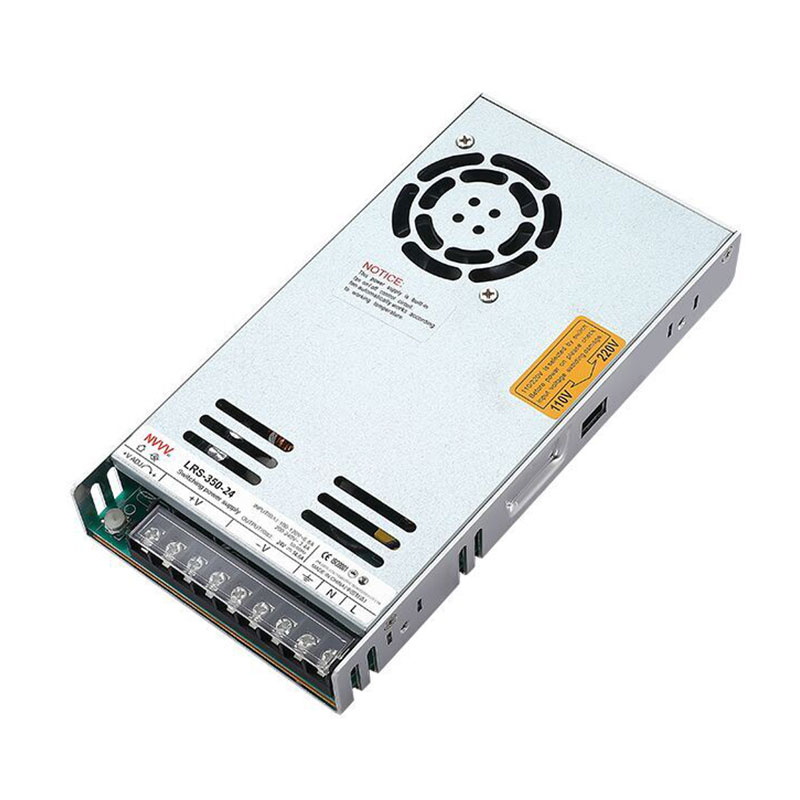What does SMPS mean?
Switching Mode Power Supply (SMPS) is a power converter widely used in modern electronic devices. With its high efficiency, stability and compactness, it occupies an important position in various application scenarios. This article will explore several key issues of switching power supplies in depth: whether it can use DC input, whether it can be used as a battery charger, and its operating voltage range. By analyzing and answering these questions in detail, we hope to provide readers with a comprehensive understanding and reference in practical applications.
1.Can SMPS work with DC input?
A switching power supply (SMPS) is a device that provides a stable output by converting input power. Traditional SMPS designs are usually designed to handle alternating current (AC) input, but under certain conditions, SMPS can also use direct current (DC) input. This depends on the design and internal circuit structure of the SMPS.
First, we need to understand the basic working principle of SMPS. SMPS converts AC input to DC through rectification and filtering, then adjusts the voltage through high-frequency switches and transformers, and finally outputs a stable DC voltage through rectification and filtering. The key components in this process include rectifier bridges, filter capacitors, high-frequency switches, transformers, and control circuits.
If you are considering using a DC input for an SMPS, you must confirm the role of the rectifier bridge. The main function of the rectifier bridge is to convert AC power to DC power. If the input is DC power, the rectifier bridge will no longer need to perform the rectification function. At this time, the DC power goes directly to the filter capacitor, and the high-frequency switch and transformer can still work.
However, not all SMPS are designed to accept DC input. Some SMPS may require a specific AC input waveform in circuit design to work correctly, such as some power supplies that start up by AC zero point detection. If there is no AC input, these circuits may not work properly.
Therefore, when using DC input, you must check the technical specifications and design details of the SMPS. Some SMPS clearly indicate in their specification sheets that they support DC input. This type of SMPS usually has a wide range of input voltage design at the input end, which can accept a wide range of DC or AC voltage input. These power supplies can be used in systems such as 48V DC, 24V DC, or other common DC voltages.
In actual applications, if you determine that you need to use DC input and the existing SMPS does not support it, you can consider using a specially designed DC-DC converter. This type of converter is designed to handle DC input and can provide efficient and stable output.
In short, whether SMPS can use DC input depends on its specific design and specifications. When selecting and using it, you must carefully consult the technical information to ensure its compatibility and safety.
2.Can we use SMPS as battery charger?
The use of switched mode power supply (SMPS) as a battery charger is a common and effective application, but it needs to be adjusted according to specific needs and designs. The design of the charger must not only consider the provision of voltage and current, but also meet the charging characteristics and safety requirements of the battery.
First, let's look at the basic functions of SMPS. SMPS provides stable DC voltage and current output through efficient conversion, which is consistent with the basic requirements of battery chargers. Battery chargers need to provide constant current and appropriate charging voltage to the battery to ensure that the battery is not overcharged or over-discharged during the charging process.
Different types of batteries, such as lead-acid batteries, lithium-ion batteries, nickel-metal hydride batteries, etc., have different requirements for charging voltage and current. In order to use SMPS as a battery charger, it is necessary to ensure that the output characteristics of the SMPS match the charging requirements of the battery. Specifically, the following points need to be considered:
Charging voltage: The charging voltage of the battery needs to be precisely controlled, especially for lithium-ion batteries. The SMPS needs to be able to provide a stable and adjustable output voltage to meet the needs of different battery types.
Charging current: The charging current usually needs to be adjusted according to the battery capacity and charging stage. The SMPS needs to have a current limiting function to ensure that the charging current is within a safe range to avoid damage to the battery.
Charging mode: The charging mode of different battery types is different. For example, lead-acid batteries usually use constant voltage charging, while lithium-ion batteries use constant current-constant voltage charging mode. When using SMPS, the corresponding charging mode control needs to be implemented.
Protection function: The battery charging process needs to have a variety of protection functions, such as overcharge protection, overcurrent protection, overtemperature protection, etc. SMPS needs to be equipped with corresponding protection circuits to ensure the safety of the charging process.
In practical applications, when using SMPS as a battery charger, it is usually necessary to cooperate with additional control circuits or charging management modules. These modules can achieve precise control of charging voltage and current and provide necessary protection functions.
For example, a microcontroller (MCU) or a dedicated charging control IC can be used to monitor and control the charging process. SMPS provides basic power output, while the control circuit is responsible for managing charging parameters and protection functions. This combination enables efficient and safe battery charging.
In summary, SMPS can be used as a battery charger, but it needs to be adjusted and designed accordingly according to the specific needs of the battery. By combining appropriate control and protection circuits, efficient and reliable battery charging can be achieved.
3.How many volts is a SMPS power supply?
The output voltage range of the switching power supply (SMPS) is wide and can be designed and adjusted according to different application requirements. The output voltage of the SMPS is usually determined by its internal circuit design and control mechanism, and the specific voltage range can be customized for different purposes. The following is a detailed analysis of the SMPS power supply voltage:
First, we need to understand the basic working principle of SMPS. SMPS works by rectifying and filtering the input power (usually AC) to DC, then converting DC to high-frequency AC through high-frequency switches, and finally adjusting the voltage through a transformer and rectifying and filtering the output stable DC voltage. By controlling the operating frequency and duty cycle of the high-frequency switch, the output voltage can be precisely adjusted.
The output voltage range of SMPS can be customized according to different application requirements. The following are some common SMPS output voltage ranges:
Low voltage applications: Some low-power electronic devices, such as small electronic instruments, LED lighting, etc., usually require lower voltage outputs, such as 5V, 12V or 24V. SMPSs with these voltage ranges are widely used in consumer electronics and industrial control fields.
Medium voltage applications: Medium voltage SMPSs are usually used in communication equipment, computer power supplies, etc., which usually require 48V or higher voltages. Communication base stations, telecommunications equipment, and server power supplies usually use 48V SMPS to provide a stable and reliable power supply.
High voltage applications: Some industrial and medical equipment require higher voltages, such as electric vehicle charging equipment, medical X-ray machines, etc. These applications may require SMPSs with voltages of several hundred volts or even higher. High voltage SMPS design requires special attention to electrical isolation and safety protection to ensure the safety of equipment and operators.
In addition to the output voltage, the input voltage range of the SMPS also needs to be considered. Most SMPSs are designed for wide range input to adapt to different power supply environments. For example, the common SMPS input voltage range is 85V to 265V AC, which can work stably under different power grid conditions around the world.
In practical applications, the voltage requirements and power requirements of specific devices need to be considered when selecting SMPS. Usually, the specification of SMPS will list its output voltage range and current capability in detail. In addition, factors such as SMPS efficiency, temperature rise and reliability need to be considered to ensure its stability and long life in actual use.
In short, the power supply voltage of SMPS can be designed and adjusted according to different application requirements, and there are corresponding solutions from low voltage to high voltage. When selecting and using SMPS, it is necessary to comprehensively consider the specific needs of the equipment and the technical specifications of SMPS to ensure the best power supply effect.
Conclusion
As an important part of modern power supply technology, switched-mode power supply (SMPS) is widely used in various electronic devices and industrial systems with its high efficiency, stability and flexibility. By deeply exploring whether SMPS can use DC input, whether it can be used as a battery charger, and its power supply voltage range, we have a more comprehensive understanding of its diverse applications. Whether in the fields of home electronic devices, industrial control or electric vehicle charging, SMPS has demonstrated its strong adaptability and reliability. It is hoped that this article can provide readers with valuable references in practical applications and help to design and use power supplies more efficiently and safely.











